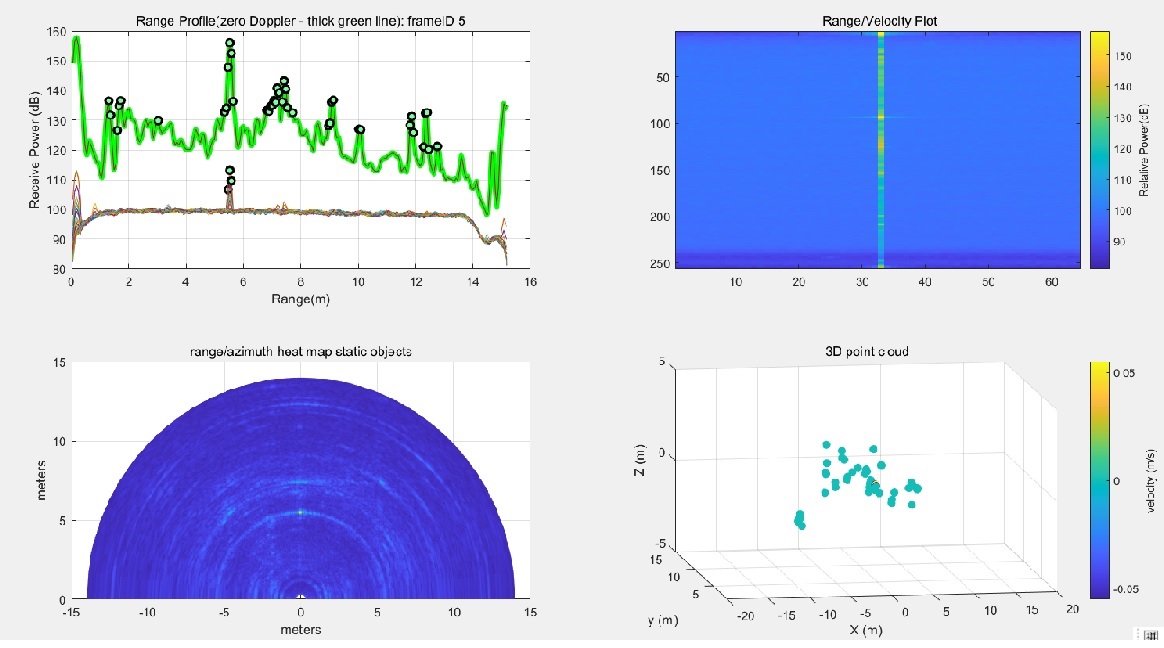Other Parts Discussed in Thread: TDA2
Hello, I have a question now.
What's the purpose of the test source case in mmwave studio ?
I mean in the the Cascade_Configuration_TestSource.lua file, the chirp parameters are true.
However, the script as follows seems to construct only a fake target---- an object at about 5m which is non-existent.
Can the test source case serve as a selftest process to prove that the EVMs (MMWCAS-RF-EVM and MMWCAS-DSP-EVM) work well with basic configurations in actual environments ???
If not , please help me to provide a selftest method to verify the basic flow because the echo signals can not show the actual targets in my own test.
---------------------------------------------------------------
if(test_source_enable == 1) then
if(RadarDevice[1] == 1) then
-- Object at 5 m with x = 4m and y = 3m
if (0 == ar1.SetTestSource_mult(1, 4, 3, 0, 0, 0, 0, -327, 0, -327, 327, 327, 327, -2.5, 327, 327, 0,
0, 0, 0, -327, 0, -327, 327, 327, 327, -95, 0, 0, 0.5, 0, 1, 0, 1.5, 0, 0, 0, 0, 0, 0, 0, 0)) then
WriteToLog("Device 1 : Test Source Configuration Successful\n", "green")
else
WriteToLog("Device 1 : Test Source Configuration failed\n", "red")
return -3
end
end
-----------------------------------------------------------------







